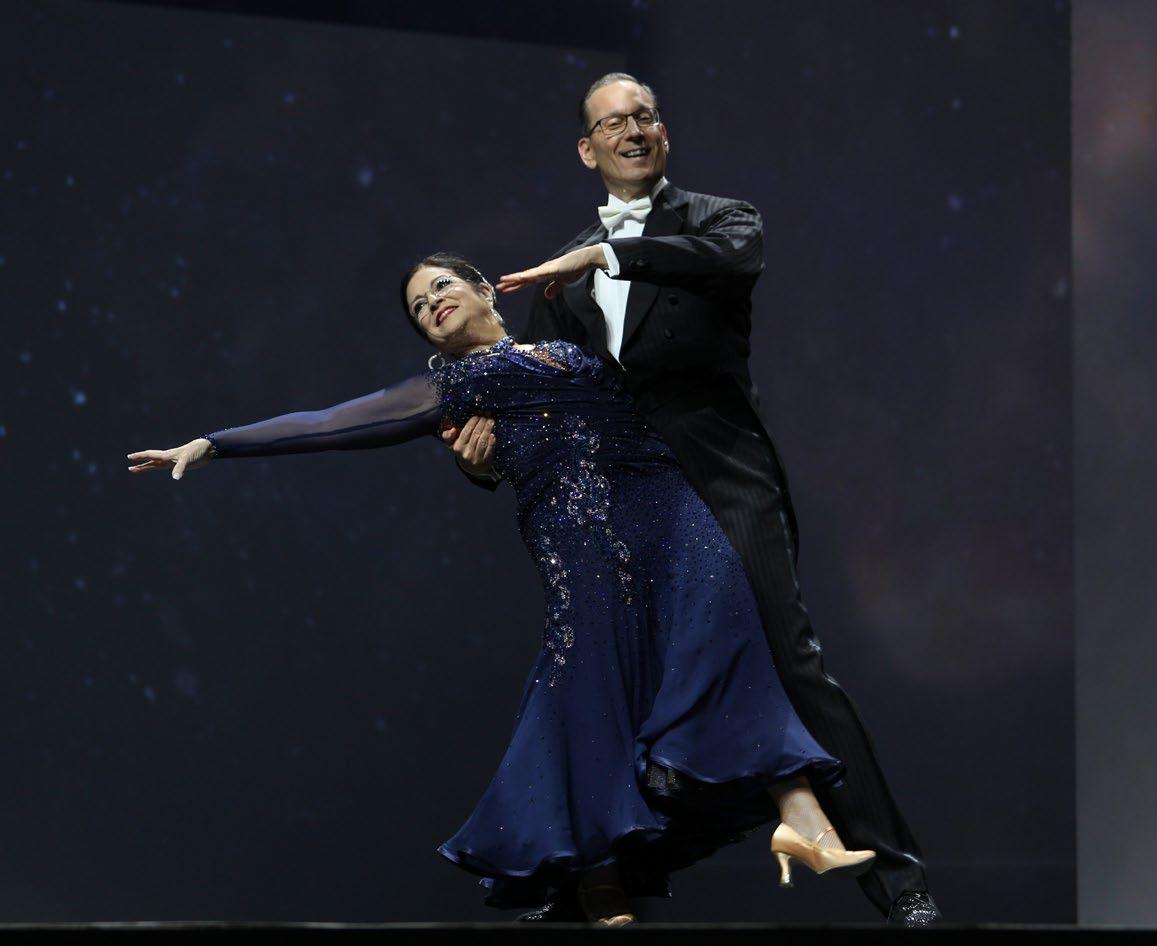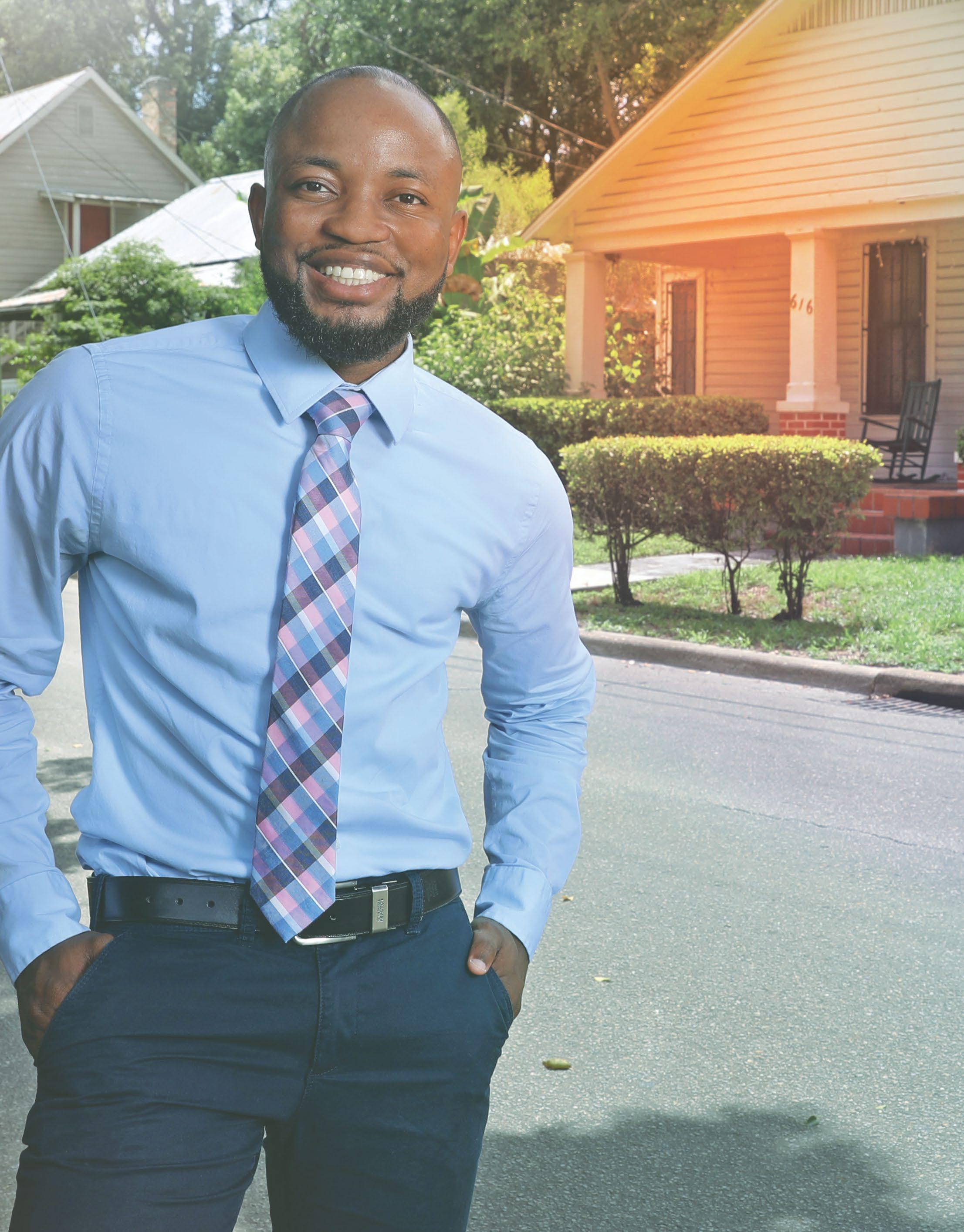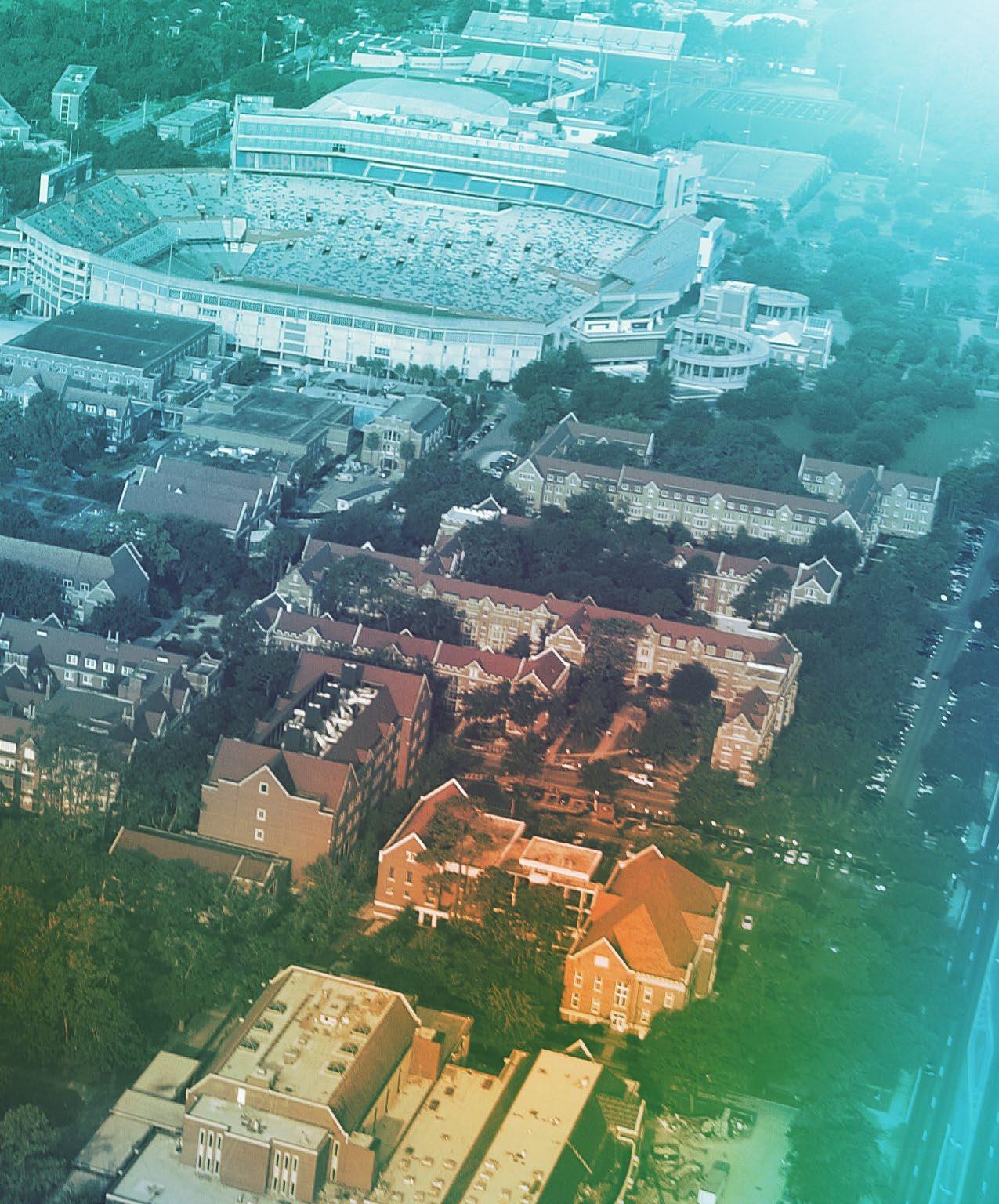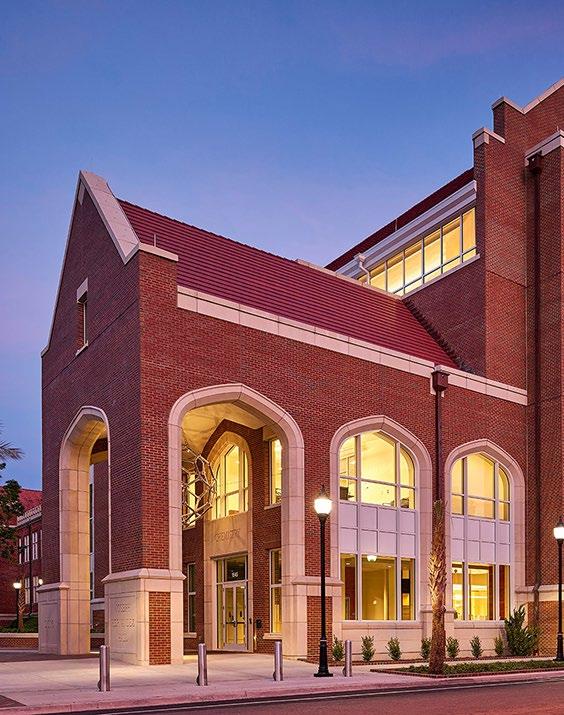
15 minute read
University Avenue


Advertisement
Together, we Go Greater
Go Greater, the University of Florida’s fourth campaign, officially kicked off in October with a series of exciting events. A “Reflections” event on Oct. 12 highlighted past campaigns and university leadership, while a rousing celebration at the Stephen C. O’Connell Center on Oct. 13 marked the public launch of the $3 billion Go Greater campaign.











BY DAVI D F I N N ERT Y
The University of Florida made a bold statement about its future on Oct. 13 when it announced its Go Greater campaign, a $3 billion fundraising effort that will fundamentally impact the university and the people it serves. The campaign — the university’s fourth — is the planned catalyst for UF’s continued rise as a public university that Florida, the nation and the world looks to for leadership and innovation.
Making a difference, shaping the future and impacting humanity is what the Go Greater campaign is all about, says Anita Zucker* (BAE 72), the campaign’s volunteer chair for 2017-18. Gifts made during the campaign will drive discovery and arm students and faculty with tools to solve society’s most-pressing problems. Classrooms, laboratories, libraries, study centers, studios and other collaborative spaces will be upgraded and created. Funding will bolster outreach opportunities and establish professorships and scholarships as well as enhance transformational programs such as advocacy for young learners; efforts to discover and develop tools that help the elderly age with grace; and treatments for brain conditions such as memory loss and Parkinson’s disease.
T H E G O G R E AT ER CAMPAIGN will help the university address real issues that matter to most people. It will bridge revelations and innovations; hypotheses and discoveries; problems and solutions. With that in mind, university officials have outlined five broad focus areas:
YOUR WORLD LO OK I NG B EYON D O U R B AC K YA R D S .
Humans will number 9.7 billion in a few decades, according to the United Nations. To feed this expanded population, agriculture will need to produce 70 percent more food. Brand new health threats will need to be handled. And according to sources, energy consumption will be from 61 to 80 percent higher.
The good news: The University of Florida is working on it.
UF engineers and doctors; biologists and agriculturalists; geologists and geographers; and other university experts are mapping out plans to help humans thrive as our habitat evolves. The university’s Feed the Future Innovation Lab for Livestock Systems is a good example.
Continued on page 18
It’s the scope of UF’s academics and research, its massive size, its reach across the whole planet and its zip code in a bellwether state that will continue to make the University of Florida an invaluable resource, Zucker predicts.
“The wonderful thing about UF is there’s really no challenge we’re not capable of addressing and, given the means, solving,” she says. “More importantly, we have an obligation — a responsibility to ourselves, our grandchildren, our neighbors and fellow humans — to do what we can now to ensure that the decades to come are healthier and more abundant; that we, as a civilization, are able to thrive in an uncertain future.”
UF’s predecessors, the headmaster and students of the East Florida Seminary in Ocala, couldn’t have dreamed in 1853 — “not in a million years” — that their school would mature into a university for the ages, UF historian Carl Van Ness (MA 85) says. Their reaction, he says, would be “utter bafflement.”
The first Gators in Gainesville, on the other hand, were determined to “go greater” from Day 1, Van Ness says — ever since the university moved into town in 1906 when enrollment was a scant 102. “They always thought the university would be bigger and better than it was,” Van Ness says.
Andrew Sledd, UF’s first president, even “drew up a dreamy sketch of what he thought a proper university would be. But he also realized that it would only happen with proper support from the Legislature and private donors,” Van Ness adds.
Now, decades later — 164 years after its unassuming start and 111 years since Sledd envisioned what UF might become — the University of Florida touches almost all aspects of life. It has more than 200 centers, bureaus and institutes for research, service and education. It’s eighth among universities in U.S. patent applications, and in the past 15 years, 190 startups have been launched based on technologies developed on campus. Enrollment has grown to 54,000 — among the nation’s largest — and some 400,000 alumni deliver the “Gator Good” to communities across the continents.
And just as UF’s first two presidents, Sledd and Albert Murphree, imagined a greater university, UF again looks to the future and considers how it can “go greater” — both immediately and in the decades ahead. The coming years, especially, will measure the Go Greater campaign’s success and, with it, bring a more potent UF, university officials say.
Continued on page 18

YOUR WORLD


STUDENT: SKY GEORGES (9ALS)
If you had a toolbox that could improve our world, what would it include? A new food crop to end global hunger? Medicine to eradicate a life-threatening disease? But these can’t even be imagined without one basic tool — and that tool is education, says University of Florida doctoral student Sky Georges. To go greater, Georges intends to make a lasting, tangible difference in the world’s impoverished communities by empowering and inspiring young people. To do that, he’s pursuing a doctoral degree in agricultural education and communication with a specialization in leadership development through UF’s
Institute of Food and Agricultural Sciences.
Georges, a former Machen Florida Opportunity Scholar born in
Haiti, knows firsthand the value of an education — and knows the good it can bring to communities. His first visit back to his homeland after moving to the United States persuaded him to continue his studies in leadership. While there, he recognized that too many
Haitians didn’t have access to education and other opportunities.
“There is an untapped resource of bright, motivated, energized young people,” Georges says, “and we’re not really giving them the credit or investing in them as much as I think we should be.”
Given the chance, those young people will foster thriving communities, he says. He speaks from experience. Georges has helped build leadership development programs in the U.S. and beyond, including in India, Haiti and Jamaica — teaching practices that lead to more sustainable ways of life. He’s encouraged students to think about their communities, pinpoint opportunities for collaboration and create service projects that effect change. A neighborhood newspaper, an urban farm and a campaign to collect and distribute eyeglasses are just some of the ideas that students developed and brought to their communities.
“The potential was there; all I did was pull it out,” Georges says, referring to the projects and their impact.
He credits the exposure, experiences and tools UF provided for recognizing and reinforcing his passion to take action and go greater.
“I think it’s about making an impact where it counts,” Georges says, “and doing work that is meaningful to the individual and to the community at large.”
—STELLA HEEKIN* (BSPR 17)
REFLECTIONS
1986-1992


1995-2000 2005-2012 2014-2022
Embrace Excellence:
$392 million: 58 new eminent scholar chairs and 47 endowed professorships; Harn Museum of Art.
EMBRACE EXCELLENCE
It’s Performance that
Counts: $850.4 million: 339 new scholarships and fellowships; 57 professorships and five eminent scholar chairs; Emerson Alumni Hall.
CAMPAIGN LEADERSHIP
Florida Tomorrow:
$1.72 billion: 104 new professorships; 250 Machen Florida Opportunity Scholarships; George T. Harrell, M.D., Medical Education Building. Go Greater: $3 billion goal: Target areas include early childhood studies, the brain, 200 new faculty endowments, 400 new scholarships and $1 billion in endowment commitments.
The Warringtons Zucker
MORE THAN 1,000 PEOPLE
are playing roles in the Go Greater campaign, including members of the University of Florida Board of Trustees and members of the President’s Campaign Cabinet who will partner with President Kent Fuchs*. Each individual or couple will have an opportunity to serve as chair or chairs for one year.
The Banks The McGurns
4
4
4 Al Warrington* (BSBA 58) and Judy Warrington
Anita Zucker* (BAE 72)
Andrew Banks* (BA 76) and Pamela Banks
The Wertheims Heavener
4
4
4 Ken McGurn* (BSBA 72, MBA 73, PHD 81) and Linda McGurn* (BSBA 73, JD 78) Dr. Herbert Wertheim and Nicole Wertheim James W. “Bill” Heavener* (BSBA 70)

NEWELL HALL

TAKE A
BY DANA EDWARDS* (BSJ 14, BA 14)
PROSPECTIVE STUDENTS SEEING THE UNIVERSITY OF FLORIDA FOR THE FIRST TIME MAY TAKE IN THE VASTNESS OF THE SPRAWLING CAMPUS WITH AWE. THIS YEAR, RETURNING ALUMNI MAY EXPERIENCE THAT SAME WONDER WHEN THEY SEE THE LATEST FACILITY RENOVATIONS, LET’S TAKE A TOUR OF UF’S THREE RECENT PROJECTS:
PLAZA OF THE AMERICAS
TOUR



JOSEPH HERNANDEZ HALL
Plaza of the Americas
WE BEGIN OUR TOUR just north of main campus in front of Library West. Here, we see the newly landscaped Plaza of the Americas, a hub of student activities and one of UF’s free-speech zones.
“I like to call it the Central Park of UF,” says Robert Hatker (BDES 93, MBC 95), project manager of the plaza construction. “As an alumnus, to get to renovate this project is incredible.”
On a typical afternoon, students can be found studying and relaxing in their hammocks or enjoying Krishna Lunch. Some might recall past plaza events like the Family Weekend barbecue, spring student productions of Shakespeare in the Park and UF Inter-Residence Hall Association’s Writing on the Wall project. When all graduations were held in the University Auditorium, the plaza served as a graduation recessional. Concerts both formal to impromptu, including Tom Petty’s band Mudcrutch, were performed on this open lawn.
Freshmen on the Plaza, 1950s The plaza’s name stems from UF’s venture into national prominence in the 1930s with former UF President John J. Tigert’s creation of the Institute for InterAmerican Affairs. The university hosted the International Latin American Association’s first conference, and students planted 21 live oaks on the plaza representing one for each of the republics of the Americas at the time.
Harold Barrand (BDES 76), director of minor projects and architecture services with UF’s planning, design and construction department, says the renovation has been about 10 years in the making. The work is a continuation of the landscaping in front of Ustler Hall and Murphree Area residential halls made possible through donations by Herb Yardley* (BA 55) and Catherine Yardley* (BSP 56). Private donors, led by the Yardleys, have funded more than $1.3 million of the plaza project.
“The Yardleys were influential in getting this project started. They are a very rare kind of donor in that they appreciate the aesthetic beauty of campus landscaping for the benefit of all,” Barrand says. “All preeminent universities have a prominent quadrangle, and now, UF will have one worthy of its stature.”
In addition to its fresh landscape, the plaza now offers more bike racks, tables and benches as well as an irrigation system, Wi-Fi and a new service drive for pedestrians and bikes.
Back in the ’50s when the Yardleys attended UF, all classes required students to walk across the Plaza, says Herb Yardley. “Everything you did was centered around it,” he says. “And now, it will continue to be the center of the university.”
Yardley credits Willard Harrison, former dean of the College of Liberal Arts and Sciences, for kick starting the renovation and Carter Boydstun* (BA 78), a senior philanthropic adviser for UF, for raising the necessary funds.
“Without Dr. Harrison’s continued leadership, none of this would be possible,” Yardley adds.


Joseph Hernandez Hall
W A L K I N G F R O M T H E
PLAZA past Keene-Flint Hall, we can’t miss UF’s new chemistry building — Joseph Hernandez Hall — at the corner of Buckman Drive and University Avenue. The building was named after Joseph Hernandez (BS 96, MS 98, MBA 98), who gave a $10 million endowment to the project, which led to funding from a number of other donors. Hernandez’s gift was the largest to the College of Liberal Arts and Sciences from a donor under the age of 50. “Only in this country UF Chemistry Lab, 1950s can a little Cuban boy work hard and get his family name affixed to a temple of knowledge like this, so I’m grateful … for this opportunity,” said Hernandez in his speech at the building’s dedication ceremony. “One of the things [my parents taught] was that in life you must pay back to the people and places that change your life and make your life better.”
Hernandez, a biotechnology entrepreneur and co-founder of several companies in the health field, attributes his attitude and scientific aspirations to a UF
Newell Hall
FROM HERNANDEZ HALL,
we head south on Buckman Drive and pass Pugh Hall. To our right, across from Turlington Plaza we find the renovated Newell Hall. In 1910, a new building opened to house the Florida Agricultural Experiment Station that had previously been hosted at UF’s Thomas Hall. The building was renovated and renamed Newell Hall in 1944 during World War II and added to the National Register of Historic Places in 1979. MATT GOOD, AJAX BUILDING CORP. The Newell Hall third floor illustrates branding graphics and simple, open flooring design. As allowed by the federal standards for historic preservation, Newell Hall’s new construction and renovations preserved or professor who first hired him to Newell Hall, 1944 reintroduced elements from both the 1910 and 1944 periods. Throughout the building, design and graphic UF PHOTOGRAPHY Newell Hall “social stairs.” wash dishes in the lab. After finishing elements pay homage to the his tasks, Hernandez could conduct site’s agricultural roots. Each floor staircase includes a timeline of the experiments under the professor’s guidance. building history as well as the original experiment station sign. The floors expose
“Chemistry is a very important pillar in the original brick, wood and terracotta materials in artistic preservation designs. an educational background, specifically in a The second floor features a study room table repurposed from original 1910 scientific background,” Hernandez says. “It’s radiators and salvaged tongue-and-groove wood from the attic. an area that needs focus philanthropically In the south courtyard, student-maintained raised gardening beds and academically, so it was an area I wanted echo the experiment fields that once stood in this space. On the front lawn, a to do whatever I could to help students and public art piece created with organic structures also conjures images of the site’s professors advance that field.” original purpose.
UF is one of the top three chemistry The project was unique in that it included student vision and involvement departments in terms of enrollment, says during the initial funding stage. Construction began in November 2015 and was Ryan Marsh, CLAS assistant vice president completed in April of this year. of development and alumni affairs. So when “We had a team of students working on the project, and they came up with former UF President Bernie Machen* the four guiding principles of what a modern learning commons should facilitate: first came to UF, he was surprised by the collaboration, interaction, focusing and rejuvenation,” says Howie Ferguson outdated chemistry facilities and vowed to (BSCE 90, ME 96), assistant director in UF’s planning, design and construction upgrade them. However, the recession halted department and Newell Hall project manager. All design elements and furniture those plans until the groundbreaking in selections were based off of the four guiding words. October 2014. Ferguson says the students also conducted research on how people learn in
Hernandez Hall spans 111,552 square workforce environments and space functionality. Findings were applied to interior feet and consists of six levels, four of which layouts, furniture selection and outside features. are used for teaching and research. The With history preserved, the space has transformed into a modern learning space supports 650 people at a time and commons that supports the different ways people work and learn. The furniture has a student-centered design with few is meant to move around, and open “social stairs,” complete with outlets and administrative offices. space to sit, connect the floors. Featuring a new restaurant venue, Au Bon
“Chemistry is a symbol for what a Pain, the 24/7 facility includes formal and informal seating with Wi-Fi inside and 21st-century land-grant university should be,” outside. The building received Leadership in Energy and Environmental Design Machen said in a UF News release. “This is gold-level status for its resource efficiency. a celebration — not just of a building, but of “The building feels closer to Google headquarters than a traditional higher a department; not just for what we’ve done, ed library,” Ferguson says. “That’s relevant because it somewhat replicates the but for what we’re going to do.” atmosphere and environment many students will encounter when they graduate and go to work.” •



Together we contribute to something much greater than ourselves.

The Pride of the Sunshine performs at the Go Greater kickoff event.



